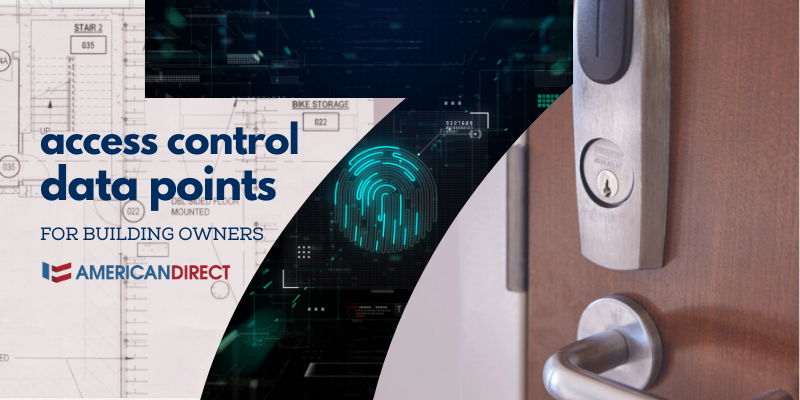
7 Access Control Data Points for Building Owners

The past few years have seen a seismic shift in the way the workforce engages with their co-working spaces. From fully remote, to in-office M-F (and everything hybrid in between) bosses and building managers are asking how to retain productivity and engagement while supporting employees’ needs.
Among the many rapid workplace developments, you may not realize that your access control system can provide useful data points to help make business decisions on building management. Access control systems supply valuable user behavior analytics to facility owners that streamline operations, improve efficiency, and enhance security – no matter when your employees are on site.
Here are seven ways your access control system can tell you more about the inner workings of your facility:
Entry and Exit Logs: Along with the obvious security functions, detailed logs of every entry and exit event in your building are one of the main functions of your access control system. These logs include date and time information as well as the identity of individuals who accessed specific areas, among other things. Building owners can use this data to track employee attendance, monitor visitor traffic, and investigate security incidents.
Occupancy Management: Advanced access control systems offer real-time usage metrics to monitor occupancy levels. By tracking the number of people in specific areas, building owners can ensure compliance with occupancy regulations, maximize usage, or prevent overcrowding. And these data points illustrate how to optimize space utilization. This data can be especially valuable for facilities with high foot traffic, such as universities, museums, airports, or conference centers.
Access Patterns and Trends: By analyzing the access logs over time, building owners can identify access patterns and trends. This information can be used to optimize security protocols, adjust staffing levels, or identify areas with high traffic to enhance operational efficiency. For example, if certain areas experience consistently high foot traffic during specific times, building owners can allocate resources accordingly, and efficiently.
Audit Trail and Compliance: Keeping a paper trail is important, no matter the industry. Access control systems generate an audit trail that supplies a record of all access events. This information is crucial for industry-specific compliance, reporting, regulatory audits, or investigations. Building owners can demonstrate adherence to security protocols, track and review access activities, and meet legal or industry-specific compliance requirements with ease.
Unauthorized Access Attempts: A vital part of proactive building security is included in your access control system. Detecting and logging unauthorized access attempts (including failed access attempts or attempts to gain entry using invalid credentials) helps building owners protect their staff and assets. Building owners can review these logs to identify potential security vulnerabilities, address weak points in the system, and mitigate lifesafety risks.
Alarm Integration: Integration with other security systems, such as video surveillance cameras, enhances your access control prowess. Building owners have access to visuals of access points that provide corollary information from access and user data to better understand security incidents in real time and make proactive and intelligent decisions. This integrated data can help building owners assess the severity of an event, identify potential threats, and respond effectively.
Interoperability: Integration with other systems and systems interoperability is one of the most powerful ways access control systems work for you. Time and attendance, visitor flow, environmental and energy management, and more can be integrated into your access control system (often without the need for completely new hardware). This all-in-one integration enables building owners to gather data from multiple sources and gain a broad view of building operations.
Unexpected benefits
Gaining a big-picture understanding of your spaces and the behaviors of the people who occupy them can help building owners make the best decisions for everyone. Leaning into the data provided by access control systems is an opportunity to make data-driven decisions, streamline administrative processes, and enhance overall facility management.
As workers engage with their workspaces in new ways, the data points and holistic understanding provided by access control help create spaces that are optimized for work like:
- Making asynchronous workflows transparent
- Empowering employees to work hours that suit them best (a win for inclusion)
- Building trust with less imperative to “micromanage”
- Detailing behavior that’s accessible at a glance (saving managers valuable time)
- Future-proofing your site to grow with technology changes
Using a tool like AccessNsite makes the process of streamlining your access control systems easy (and we’re often able to utilize existing hardware and software to keep your costs down).
How has your access control data helped you make the most of your spaces?

